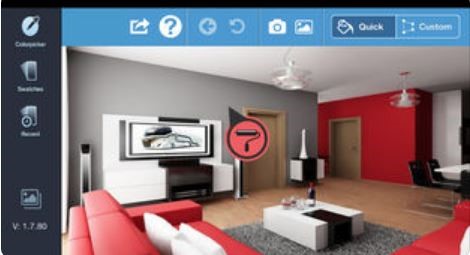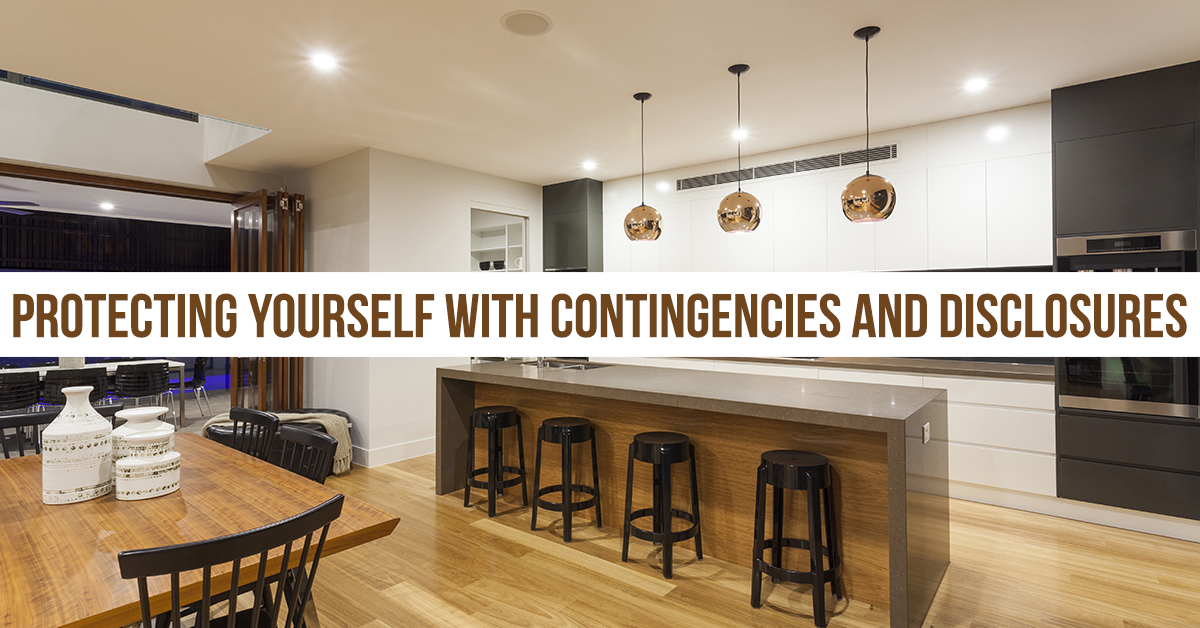5 Advantages of Selling Your Home In The Fall

5 Advantages of Selling Your Home in the Fall
While spring and summer are traditionally considered prime real estate seasons, the advantages of selling a home in the fall are often underestimated. Here are five compelling reasons why autumn might be the best time to list your property and make a big change.
Reduced Market Competition
Unlike the bustling real estate seasons, the fall landscape typically experiences less competition. With fewer properties vying for attention, your house could stand out more prominently, attracting serious buyers actively looking to make a purchase. This reduced competition can lead to a quicker sales process and even multiple offers. Active buyers in the fall can also be more motivated – their sense of urgency could work to your advantage.
Accelerated Transactions
With this cyclical lull, you’ll find a unique advantage in expediting your closing process. Mortgage lenders, attorneys, home inspectors and appraisers with reduced workloads can focus on ensuring your transaction glides along seamlessly. These factors often mean a swift and efficient closure, alleviating stress and providing a harmonious experience for all parties involved.
Favorable Timing
Aside from striking a balance between summer’s energetic buzz and winter’s slower pace, this period also offers a sweet spot for buyers who want to settle into their new homes before the holiday festivities kick in. Potential buyers can be eager to start the new year in a new home. By listing your house in the fall, you align with the natural rhythm of many people’s schedules, increasing the likelihood of attracting committed buyers.
Optimized for Comfort
In the cooler months, you can lean into your home’s cozy and inviting aspects in a way that might not work as well in summer. In addition to all-season staging tips, fall is a great time to make a fireplace the focal point of a room and style your interior to emphasize warmth and coziness. And no matter when you decide to sell your home, a fresh coat of paint is always a good idea, but in the coming months, consider a rich chestnut glow on an accent wall or a neutral cream with warm undertones.
Enhanced Curb Appeal
After the heat of summer, cooler weather can also provide a vibrant backdrop for showcasing your home’s curb appeal. Along with thoughtful staging inside, optimize the exterior for maximum interest. Seasonal landscaping and tasteful decor in moderation, such as pumpkins or an autumn-inspired wreath, can further accentuate your home’s charm and help potential buyers envision themselves living there. It’s also beneficial to run through a fall maintenance checklist for any updates needed before your house hits the market.
Yes, it’s true – the fall season presents many home selling advantages! From seasonal curb appeal to motivated buyers, this time of year offers unique opportunities for a highly successful transaction as you prepare for your new adventure.
JENNIFER MCGUIRE AUG 21, 2023
First Impressions Matter


If you are considering selling your home, there are several things you can do now to make the best first impression on potential buyers. Taking the time to declutter, deep clean and make simple repairs will show buyers that your house and property are well-maintained and ready for a new owner.
Increase Curb Appeal
A clean and attractive exterior is crucial, as it creates a positive first impression and sets the tone for the rest of your home. Spruce up your outdoor space by removing overhanging tree limbs and branches, applying a fresh coat of exterior paint, mowing the lawn, adding plants or flowerpots, power washing, painting patio and deck areas and repairing or replacing damaged screens and doors.
Take Care of the Obvious
While grooming your outside space, you’ll need to address any glaring concerns. Check and fix loose or damaged roof shingles, bricks, wood and trim. Clean out septic systems to ensure your property is in top working condition. With these projects completed, you’ll also reduce maintenance stress while your home is listed.
Make the Interior Shine
Create an inviting and welcoming atmosphere by cleaning, decluttering and organizing your home, which shows buyers that there’s plenty of space. Freshen up your indoor areas by painting walls, removing outdated rugs or furniture, polishing kitchen appliances and deep cleaning hardwood floors, sinks, tiles and showers.
Remove the Clutter
You’ll also want to check that any clutter is cleared by organizing closets with shelves and storage bins, storing everyday items like paper and toys in cabinets and closets, and removing personal items like picture frames and your kid’s tee-ball trophies. While you’re thoughtfully arranging, you could take advantage of this opportunity to get rid of any paperwork that is no longer needed while gathering documents potential buyers may need to review in in a handy folder. These papers could include HOA information, appliance manuals, warranty information, records of repairs (especially if it involved electrical, plumbing or contractor issues) and the survey of your property.
By increasing the outdoor appeal, creating a warm, appealing indoor space and gathering all the information upfront before listing your home for sale, you’ll be well on your way to smooth, stress-free transaction – and seal the deal with a great first impression. Take the advice of your realtor! He/she hears all negative and positive comments from prospective clients.
By JENNIFER MCGUIRE-BLUE GEN JUL 7, 2023
5 Apps to Redecorate Your Home with Your Phone

Guest post by Lori Cunningham
With dozens of decorating apps to choose from and inspiration just a finger touch away, redecorating your home has never been easier. Augmented Reality (AR) now lets you use your phone to see how colors, accessories, and furniture will look in your own house. On the horizon, you can expect to see apps using Artificial Intelligence (AI) to learn your style through your interaction with them.
Whether you’re looking to give your living room a quick refresh or want to completely revamp your home, these five apps can help you get started. Create a stunning look without blowing your budget — no professional interior designer needed.
Houzz: Start with online inspiration
Apps like Pinterest and Instagram have plenty of pictures and designs to start your inspiration journey. However, it’s easy to get overwhelmed, and keeping track of design ideas can be cumbersome. It’s not always simple to buy an item featured in a picture, and you might need to search around to find a similar item. A site like Houzz can help you keep everything organized and in one place.
Houzz covers architecture, interior design, decorating, landscape design, and home improvement. It has over 17 million high-resolution photos, all of which can be filtered by room, style, budget, size, color, or a combination.

Many of the pictures have purchasing information on the featured items, allowing you to purchase them within the Houzz app. You can also save pictures to an “Ideabook” to help keep your style ideas all in one place.
The app uses AR to help you see what an item will look like in your home. Click the “View in my room” button to see the item in 2D using your phone’s camera.
The Houzz app is free on iOS and Android.
MagicPlan: Create a floor plan from your phone
To ensure that the furniture you plan to purchase fits in the room you’d like to decorate, it helps to create a floor plan. The MagicPlan app lets you input the dimensions of a room by measuring, drawing, or using your phone’s camera to create the floor plan.
Once you’ve added your room’s dimensions, you can add doors, windows, structural features, plumbing, appliances, electrical, HVAC, furniture, flooring, and more to your floor plan. Many of these features are free to use, but there is an in-app cost for things like cabinetry, light switches, and outlets.
When you add MagicPlan’s 2D furniture, you can adjust it to the size you want by using your fingers or inputting the dimensions. You can add your own photos to your floor plan, as well.
If you are planning to paint or replace the flooring, estimate how much it would cost by clicking “Estimate” for the approximate price. Just remember the estimates do not include the cost of labor.
MagicPlan is free on iOS and Android.
TapPainter: Virtually paint your walls
Swatches from your local home improvement store make it hard to envision the color of the whole room, and buying paint samples can get expensive. The TapPainter app lets you choose paint colors from Benjamin Moore, Behr, Sherwin Williams, and other popular brands.

Use the app to snap pictures of the room you want to paint and try out different colors by entering the code from a paint swatch, choosing a color from one of the brands included, or mixing your own custom color. You can even add different colors to different walls.
TapPainter is free on iOS.
DécorMatters: Design a room using AR
DecorMatters is an app that lets you virtually add pieces and design elements to a real room. Take a picture of the room you want to decorate and use AR and the AR ruler to add and measure 3D pieces. This is a simple way to see if a piece you’ve been eyeing will fit.

The app features items from popular stores like Crate & Barrel, Target, Overstock, West Elm, IKEA, and Ashley, and you can make in-app purchases right from your phone. You can save your ideas to your mood board to share with friends, and the DecorMatters in-app messaging also offers free feedback and suggestions from real DecorMatters interior designers.
DecorMatters is free on iOS.
Art.com: Add some art to your walls
Finally, the Art.com app offers hundreds of frame styles and sizes to help you plan your gallery wall. Use the app to arrange different layouts to see how your gallery wall could look.

Art.com’s latest app release also lets you upload your own artwork and family pictures to pair with any style frame, and you can even have them printed on canvas, wood mount, acrylic, and more.
The Art.com app is free on iOS and Android.
It’s easy to create a stunning look that suits your style, all from your phone. These five apps offer the inspiration, confidence, and guidance you need to get started on your redecorating project.
Lori Cunningham is a family tech advocate and contributing writer for Xfinity Mobile. She is a mom to two creative children and started the WellConnectedMom.com to share her passion for technology with others.
Sam Shalom
Sam is the Content and Multimedia Specialist for Coldwell Banker Real Estate. He is Jersey born and bred, and currently resides in Weehawken, NJ. He is an avid reader, loves Games of Thrones and is a New York Yankees die-hard.
You can follow him on Twitter @World_Shalom
Tips For Summertime Outdoor Living

Outdoor living is as important as indoor space, especially in the summertime. Everything in your backyard — whether it’s a fire pit, dining area or theater — should be part of a well-planned, integrated design. Here are a few outdoor accessories that will turn your backyard into another room of your house.
Fire Pits
Fire pits add a warm touch to an outdoor area and can serve as a focal point in landscape design, especially if you live in an area that gets cool at night. You can choose from wood-burning, propane, gel fuel and natural gas fire pits, many of which double as an outdoor coffee table when not lit. If space is a consideration, go with a tabletop model.
Outdoor Kitchen and Bar
Your outdoor kitchen should have everything the chef needs to prepare a backyard feast, starting with a gas, charcoal or hibachi grill. Also consider adding a smoker, warming drawer, stove top and pizza oven, depending on your favored cuisine. For those who like a few beverages by the pool, consider an outdoor bar complete with a mini fridge, sink, ice maker, beer tap, wine chiller, and of course, a blender for margaritas. And don’t forget to make sure the area is well-lit for those evenings of entertaining.
Dining Areas
What good is it to eat and drink outside without a dining area? Make sure it has comfortable chairs with durable cushions and a table for dining with an expansive umbrella for shade and shelter. Styles vary widely, from Mediterranean to Japanese, Victorian, country kitchen and cabana designs, or with whatever stylistic flourishes tickle your fancy. Not interested in contemporary outdoor sets? Comb local thrift shops and flea markets for mismatched country kitchen furniture or bring an elegant dining set outside under a covered awning for a fresh new take on outdoor dining.
Backyard Theater
The next best thing to a drive-in, a backyard theater can entertain family and friends. For a well-designed movie-viewing experience, make sure you have a video projector, a free-standing portable screen, and to top it all off, a popcorn machine. Another outdoor viewing option is a self-contained outdoor TV, which come in nearly every size and incorporate heavy-duty construction, making them resistant to temperature and weather. Some also are resistant to rain.
For more backyard design ideas, check out Pinterest and enjoy outdoor living this summer!
By Jennifer McGuire|Blue Matters
Protect yourself with Contingencies and Disclosures

 Buying a house is a give-and-take process. But it’s more than just giving your money and taking the keys. The contract process is wrapped around a series of contingencies and disclosures. Let’s break it down.
Buying a house is a give-and-take process. But it’s more than just giving your money and taking the keys. The contract process is wrapped around a series of contingencies and disclosures. Let’s break it down.
Contingencies are “walk-away” clauses in a contract that allow you to back out of buying a house if certain conditions aren’t met. Disclosures are the seller’s responsibility and reveal any and all property defects. These contract stipulations serve both sides of a real estate transaction — protecting you as a buyer and protecting the seller. too. All of them must be resolved, one way or another, prior to completing the sale.
Contingencies: From appraisals to termites
Think of a contingency as an “if-then” proposition. For example: “If I’m able to sell my current home, then I’ll buy yours.” It’s likely that several standard contingencies are already included in the purchase contract, such as the sale being subject to a property appraisal. This is an important stipulation because if a property appraises below the offer value, the buyer can be on the hook to the lender to make up the difference. You definitely want this contingency to be a part of any binding offer.
Here are some other common scenarios in which a contingent offer can come into play.
- Financing: Perhaps the most common stipulation is a contract contingent on the buyer obtaining financing. This way, you’re not penalized if you don’t quality for a home loan, and the seller doesn’t have his property off the market for an extended period of time for a nonqualified buyer.
- Inspection: You should always have your potential new home thoroughly reviewed by a qualified home inspector. Remember, the appraisal is a valuation of the home for the lender; it doesn’t require a detailed examination of the property’s physical condition. A home inspector will perform a comprehensive analysis of the structure and mechanical systems — and, most importantly, identify items that need to be repaired or replaced. You can then negotiate for these issues to be resolved as a part of a contract inspection contingency.
- Sale of a prior home: If you include this contingency, your offer is subject to the completion of the sale of your current house. A chain of sale clause is most often based on a specific time period — generally 30-60 days — after which your contract is forfeited. In a seller’s market, including this contingency puts your offer at a serious disadvantage.
Other standard contingencies can include such things as a termite certification and the definition of a reasonable time period to close the sale. But there may be additional conditions that you want to include in an agreement.
While it’s important to protect your own interests, generally, the more contingencies in your offer, the less enthusiastic the seller may be to deal with you. You’ll have a better shot with spiking your offer with “if-thens” in a buyer’s market.
Some contingencies you can’t control
A few conditions of the sale are out of your control, such as lender approval of your loan or the home’s appraisal coming in with a sufficient value. Others will be your responsibility, like obtaining homeowners insurance — although a carrier has to approve the property for coverage, so that’s something you can’t fully control, either.
Another common transaction condition can be allowing the buyer to complete the sale of a prior home or providing sellers time to find their next residence. Either of these conditions needs to have a set time limit.
Buying a house: What you can control
A home inspection is in your best interest and allows you to back out of the deal if serious matters are uncovered. Your contract may stipulate that repairs must be made if problems are uncovered, but that can mean closing delays while contractors are scheduled and repairs are approved. You may prefer to renegotiate the sale price if significant improvements are needed.
In hot markets, buyers often pay for a pre-inspection report prior to making an offer — or forgo an inspection altogether. In other cases, sales contracts may be written with “a right to void.” This means you won’t require repairs that are suggested by the home inspection report but can cancel the sale without penalty.
To minimize delays at closing, you might decide to accept a previous condition “as is” by allowing a contingency deadline to expire. It’s a deliberate decision to offer a concession and can be used as the basis for a new condition at closing, such as a credit toward fees or some other discount. Be aware, though, that some lenders will restrict the amount of credits allowed.
A worst-case scenario can involve canceling the sale altogether. That’s justified only by a clear violation of a contingency by either party. If the seller has neglected to fulfill a condition, you’ll likely get your earnest money back from escrow. Not so if the failure to meet an obligation is on you.
Disclosures: What’s wrong with the property?
Sellers are obligated to tell you all known defects, environmental hazards, past damage and even homeowner association issues regarding the property in question. This is your first opt-out opportunity and a critical juncture in the homebuying process.
But disclosure laws vary from state to state, and while you hope the seller will reveal major property problems, you might not expect him to tell you about the noisy neighbors’ hot tub parties or the fact that the home sits beneath the flight path of landing jumbo jets.
Your agent, on your behalf, will obtain from the seller all legally required disclosures, which are generally due within days of signing the sales agreement. A lack of proper disclosure can lead to legal action. It’s best if all parties act in good faith, but in house hunting, remember the credo “buyer beware.”
Types of disclosures
A property’s background may reveal a variety of conditions, from neighborhood nuisances to on-site deaths. Unfortunately, because of wide-ranging local and national laws, you can’t always be sure what the owner is legally bound to tell you without asking a lawyer. There are four common disclosure forms.
- Standard disclosures: Most state regulatory commissions and real estate associations provide boilerplate forms that a seller can use to check off what is — and isn’t — a problem. While it’s likely such forms will include major issues, it may not include details of homeowner association obligations, missing mechanical items or so-called “stigmatized” properties.
- Natural hazards: This document will detail environmental and natural hazards, including fire, flood and earthquake zones.
- Lead paint: Federal law requires owners of houses built before 1978 to disclose all known lead-based paint and hazards in a home. Buyers must also be given a 10-day window to test the house for lead, if they desire.
- Sold “as is” exemption: While sellers are required to share all known defects of a property, the transaction can be completed “as is.” When both parties agree, the seller will not make or pay for any repairs, corrections or replacements, regardless of what’s found in an inspection. The buyer is essentially waiving all rights. This can be very risky for you as a buyer.
Start the clock
Keep track of contingency deadlines so nothing sneaks up on you — and so you won’t miss an important date to enforce a condition that the seller must meet. Having a calendar with all deadlines listed, perhaps even with pre-deadline notices a few days ahead, will help you stay on top of critical contingencies.
Throughout this process you’ll want to consult your agent to guide you along; in some more complicated cases you may even want the advice of an attorney. It’s easy to get tripped up by legal jargon, and sometimes what’s not in writing does the most damage.


 Facebook
Facebook
 Twitter
Twitter
 Pinterest
Pinterest
 Copy Link
Copy Link





